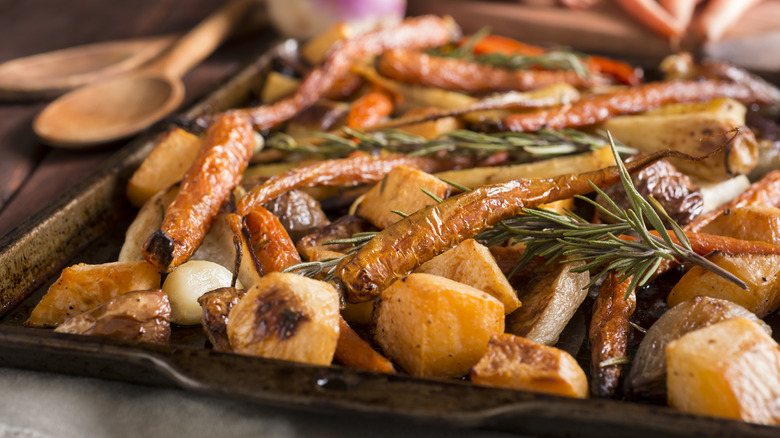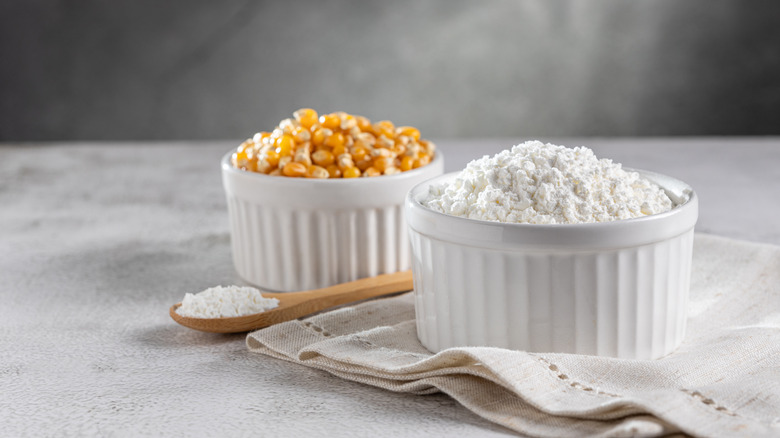The Ingredient To Reach For When Making Crispy Roasted Vegetables
There's nothing quite like the satisfaction that comes from whipping up a batch of flawlessly roasted vegetables. Of course, you need the right amount of salt and spices to take care of the taste, but if you're going for a crispy finish, then one particular ingredient can get this job done with flying colors: cornstarch. You may already know that cornstarch can be used in a variety of ways, such as thickening sauces, stews, or soups. It can even add some backbone to pastries, as it provides a structured element. Utilizing cornstarch to get a decent outer crisp for your roasted vegetables is a piece of cake.
Simply start by ensuring your vegetables are fully prepped and dry. After tossing them with the desired seasoning and oil, you can move on to the cornstarch. Coat all your veggies with this not-so-secret weapon before slipping them into the oven. Be sure you use 1 tablespoon for every pound of vegetables. Roast them, and voila: You have a stunning tray of crispy roasted vegetables.
The crispy magic of cornstarch is in the amylose
Cornstarch comes from the process of wet-milling corn. It is composed of carbohydrates and does a bravo-worthy job of absorbing moisture in food. The amylose molecules in the starch are where and how the magic happens because their structure enables the crispy coating to form. In short, cornstarch granules expand when exposed to the moisture that is released as food is cooked. The water evaporates, leaving the amylose molecules to harden in place.
Cornstarch is a staple in most well-stocked kitchens, but if you have none on hand, there are a few substitutes that will suffice. You can use potato starch and cornstarch quite interchangeably in cooking. Also high in amylose, it is an ideal second choice for creating crispy coatings. You can simply swap equal amounts of potato starch for cornstarch. Rice flour is another good alternative, and equal amounts can be swapped out here, too. If you're really in a pinch, you could try all-purpose flour. However, your veggies probably won't be as crispy. For this alternative, you are going to need twice as much flour (so about 2 tablespoons per pound of vegetables).

